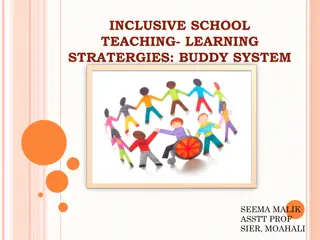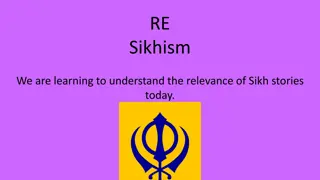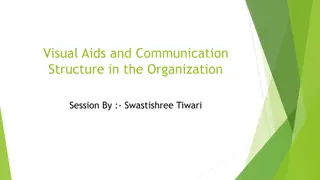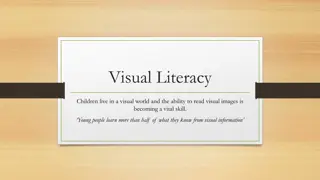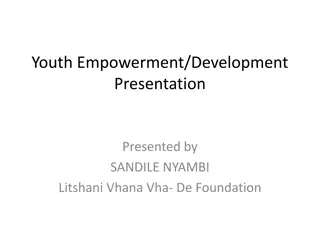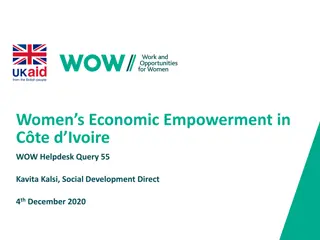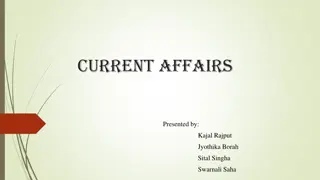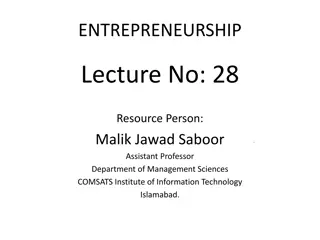Visual Story Empowerment with Spandita Malik
Delve into the concept of story empowerment through the lens of contemporary artist Spandita Malik. Explore how art can shed light on social issues, empower individuals through storytelling, and create platforms for diverse voices to be heard. Discover the transformative power of personal narratives in art and design, leading to meaningful conversations and societal impact.
Download Presentation

Please find below an Image/Link to download the presentation.
The content on the website is provided AS IS for your information and personal use only. It may not be sold, licensed, or shared on other websites without obtaining consent from the author.If you encounter any issues during the download, it is possible that the publisher has removed the file from their server.
You are allowed to download the files provided on this website for personal or commercial use, subject to the condition that they are used lawfully. All files are the property of their respective owners.
The content on the website is provided AS IS for your information and personal use only. It may not be sold, licensed, or shared on other websites without obtaining consent from the author.
E N D
Presentation Transcript
Visual Story Empowerment LESSON PLAN FOR CONTEMPORARY ARTIST SPANDITA MALIK I m writing my story so that others might see fragments of themselves. - Lena Waithe
Hello! Our Essential Questions: 1. How does listening to and looking at contemporary artists deepen our understanding and capacity for art and design to provide insight into issues facing our society? 2. In what way can we use art to deepen our understanding of other peoples circumstances, situations and lives? How can we use art to create room for others to express themselves?
Learning Objectives 1. We will explore how contemporary art can shed light on social issues while providing inspiration about the role artists and designers play in shaping society s views on issues 2. Learn about the power of personal stories in making art and design 3. Create a work of art using multiple mediums and research 4. Create a visual art platform that incorporates the viewpoints of others on complex social issues 5. Discover how allowing for productive and respectful conversations about sensitive topics strengthen the work
Spandita Malik When these women embroider their own portraits, they not only take control over the representation of their own image but they also embed into their images their own silent stories. When I collaborate with these women we create a connection through our art. But when I listen to them through our inherited language of embroidery that s when I understand the true meaning of Nari.
Video: Spandita Malik Cabin Fever Artist Talk Click here to watch video
What is story empowerment? Story empowerment is the process of how story telling itself gives power back to the teller. The teller is able to reclaim their narrative. In addition, by telling one s story, it gives power to others who may have similar experiences and/or circumstances. In participating in this visual dynamic of giving out stories and then receiving others stories in return, we have the opportunity to speak what was thought of as unspeakable or silenced or difficult to approach. The process of reclaiming, the process of giving voice to everything that was silenced is what s able to give that sense of empowerment back to someone.
Identify Story Empowerment Spend some time on Spandita Malik s website: https://spandita-malik.com Read this article on Why Storytelling Matters Artists/Designers as visual storytellers check out these websites for more examples of visual storytelling: Swoon Jenny Holzer Casey Ruble
Research! Do some brainstorming on a person or group of people who s stories you d like to hear and you feel people need to hear. Do some research on potential people or groups you could focus your project on. *TIP* keep it close to your heart, a person or a group you feel passionate about. Find multiple people or groups you could work with as possibilities and keep a working document of all of the above. Pull out some quotes from personal stories and always write down credits and sources for the quotes.
Creating the Visuals! Based on the person or groups you are looking at doing your project on, begin brainstorming on how their stories might translate into visuals. Painting, drawing, photography, collage, found objects, fabric etc. Think about what the visual is symbolizing (the way embroidery in Spandita Malik s work symbolizes a technique from India and one that was taught through generations). Test out different mediums and narratives you have found in your research.
Make a connection! Decide on a person or group you d like to reach out to. Create a piece of artwork with the materials you ve settled on and some text or title or content driven by your research. If you do not feel comfortable, simply reach out to a friend. Send an email or call and explain your project. Include an image of the artwork you made on your own as an extension of trust. Ask if you can make a piece of artwork for that person or group and that you d like to include their voice. They can absolutely remain anonymous if they d like to. Ask if they could email a quote or an image or a symbol that represents their story or something they d like to say. Create 2nd piece of artwork based on how they respond and their answer to the above inquiries. Present the two pieces you have made to the group for discussion. Ask for the mailing address of the person or group you have connected with and mail one or both pieces to them.
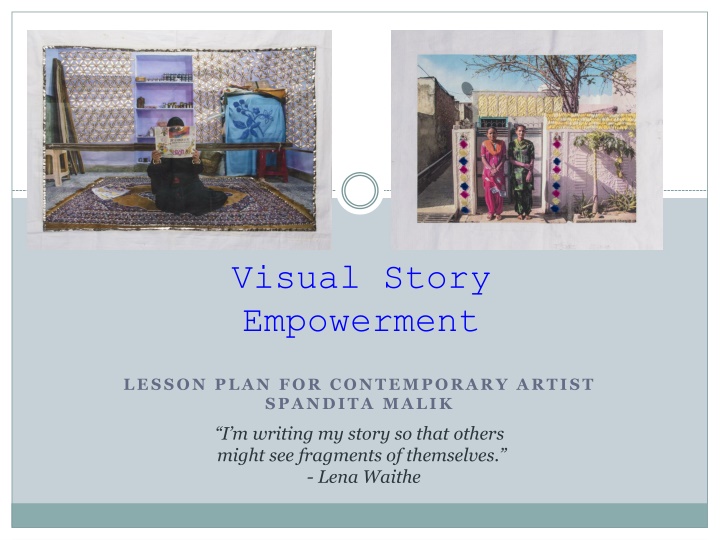

![textbook$ What Your Heart Needs for the Hard Days 52 Encouraging Truths to Hold On To [R.A.R]](/thumb/9838/textbook-what-your-heart-needs-for-the-hard-days-52-encouraging-truths-to-hold-on-to-r-a-r.jpg)

